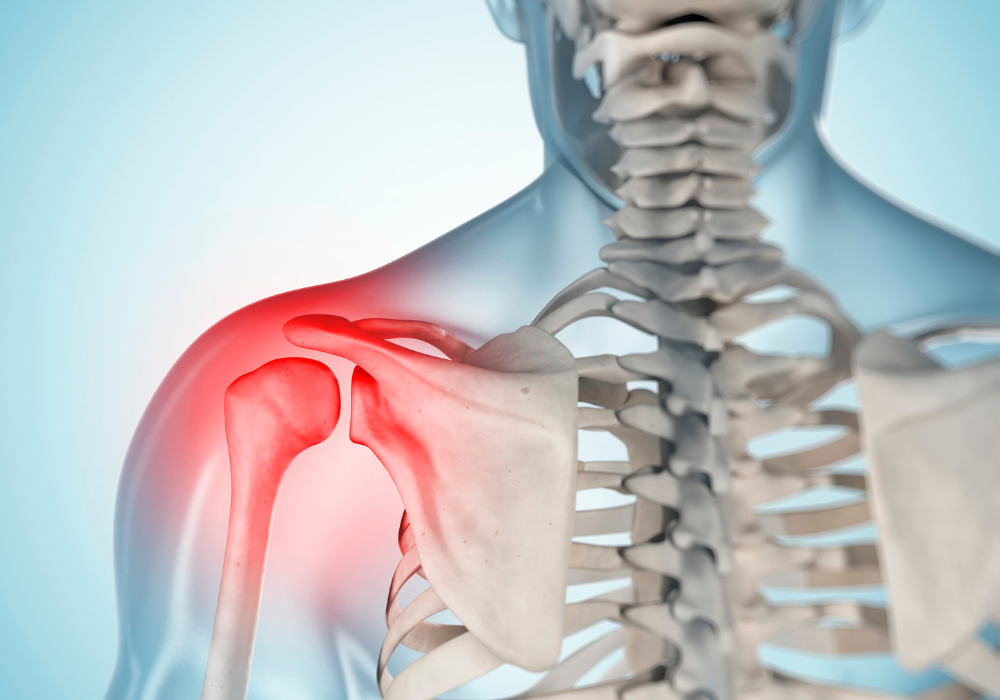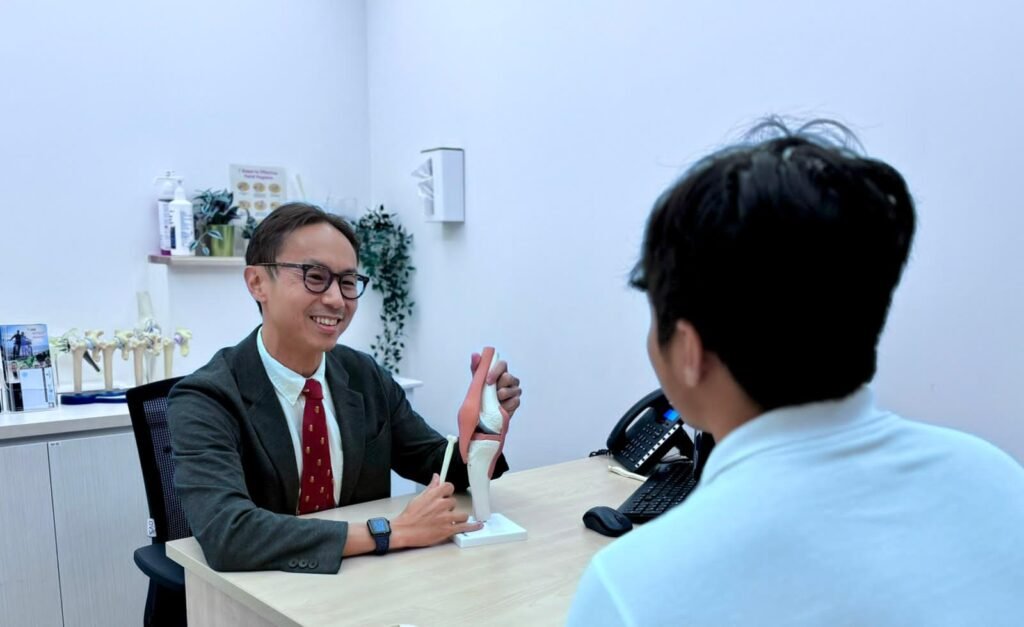A rotator cuff tear is a prevalent condition when you are in the field of sports particularly among athletes engaged in activities that demand repetitive overhead motions or sudden, forceful movements. This injury can significantly impact an athlete’s performance and necessitate timely intervention for optimal recovery and return to play.

A rotator cuff tear is a prevalent condition when you are in the field of sports particularly among athletes engaged in activities that demand repetitive overhead motions or sudden, forceful movements.
High-Intensity Sports:
Athletes involved in high-intensity sports such as baseball, tennis, volleyball, and swimming are at increased risk of rotator cuff tears due to the repetitive nature of overhead motions required in these activities. The constant throwing, serving, spiking, or swimming strokes place significant strain on the shoulder joint, making the rotator cuff susceptible to injury over time.
Extreme Rotation:
Certain sports activities, such as martial arts, wrestling, and gymnastics, may involve sudden, forceful movements or extreme rotational motions of the shoulder. These actions can lead to overextension or improper alignment of the shoulder joint, increasing the risk of rotator cuff tears, especially if performed without adequate warm-up, conditioning, or technique.



Pain:
Athletes with a rotator cuff tear often experience persistent pain in the shoulder, particularly during overhead movements or when performing specific sports-related actions. The pain may worsen with activity and may be accompanied by discomfort at rest, affecting both performance and quality of life.
Weakness:
Muscle weakness in the affected shoulder is a common symptom of a rotator cuff tear, making it challenging for athletes to generate power or control during sports-specific movements. This weakness may manifest as difficulty lifting, throwing, or serving with the affected arm.
Limited Range of Motion:
A decreased range of motion in the shoulder joint can hinder an athlete’s ability to perform certain skills or techniques required in their sport. Restricted mobility may affect performance and increase the risk of further injury if compensatory movements are adopted.
Audible or Sensory Changes:
Some athletes may experience a clicking, snapping, or grinding sensation in the shoulder joint during movement, indicating underlying damage to the rotator cuff. These sensory changes may be accompanied by swelling, stiffness, or instability in the shoulder.
When conservative measures prove inadequate or for severe cases of rotator cuff tears, surgical intervention may be recommended. Surgical treatments aim to repair the torn tendon and restore stability and function to the shoulder joint. There are two primary surgical approaches for treating rotator cuff tears:
Procedure :
Arthroscopic surgery is a minimally invasive procedure that utilises small incisions and a camera-equipped arthroscope to visualise the interior of the shoulder joint. With the aid of specialised instruments, surgeons can access the torn tendon and surrounding structures. Surgeons repair the torn tendon by stitching it back to its attachment site on the bone using sutures or anchors. These anchors are inserted into the bone to secure the tendon in place as it heals.
Open surgery may be necessary for larger, more complex rotator cuff tears or cases where arthroscopic repair is not feasible. It allows for direct visualization and access to the torn tendon and surrounding structures.
Procedure:
During open surgery, a larger incision is made over the shoulder, providing the surgeon with a clear view of the damaged tendon. This approach offers greater versatility in addressing extensive tears or associated shoulder pathologies. Following repair of the tendon, the incision is closed with sutures, and the shoulder is typically immobilized to facilitate healing.
Recovery:
Recovery from open surgery may be slightly longer than arthroscopic procedures due to the larger incision and potential for increased tissue trauma. However, with appropriate postoperative care and rehabilitation, patients can achieve successful outcomes.
Considerations:
Patient-Specific Factors:
The choice between arthroscopic and open surgery depends on various factors, including the size and complexity of the tear, the patient’s overall health, and the surgeon’s expertise. The decision is made collaboratively between the patient and their healthcare team.
Rehabilitation:
Regardless of the surgical approach, postoperative rehabilitation plays a crucial role in optimizing outcomes. Physical therapy is typically initiated soon after surgery to restore range of motion, strength, and function to the shoulder joint.
Long-Term Benefits:
While surgical repair can effectively address rotator cuff tears, full recovery may take several months. Adhering to the prescribed rehabilitation protocol and following up with regular medical appointments are essential for achieving the best possible outcome and minimizing the risk of re-injury.
Immobilization:
Patients may need to wear a sling or brace for several weeks following surgery to protect the repair and allow the tendon to heal properly.
Rehabilitation:
Gradually reintroducing shoulder movements through structured physical therapy sessions is essential for restoring range of motion, strength, and stability in the shoulder joint.
Rotator cuff tears can significantly impact shoulder function and quality of life. While non-surgical treatments may be effective for some individuals, severe or persistent tears may require surgical intervention. Post-surgical management, including immobilization, rehabilitation, and pain management, is crucial for achieving a successful recovery and restoring shoulder function. Early diagnosis and appropriate treatment are key to minimizing long-term complications and maximizing outcomes for individuals with rotator cuff tears.
Elevate your performance with Apex Sports Clinic! Schedule an appointment today for personalized, expert care in optimizing your athletic potential.


